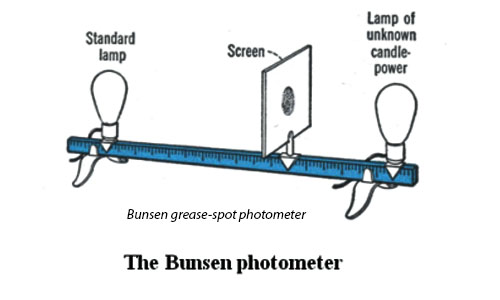Photometry
1.Photometry is the branch of physics which deals with the quantitative measurement of light.
2.Luminous flux is the amount of light energy emitted by a source per second.
It is denoted by Q. Its unit is lumen.
3.Lumen is the unit of luminous flux and is defined as the amount of luminous flux emitted per unit solid angle by a point
source of one candle power.
4.Luminous intensity is defined as the amount of luminous flux emitted by a source per unit solid angle.
5.The amount of light energy incident on unit area of a surface per second is called intensity of illumination.
The unit of intensity of illumination is phot in CGS system and lux in SI-unit.
1 phot = lumen
Intensity of illumination=
where Q=luminous flux
A= area covered by light energy
6.The intensity of illumination of a source at a point is inversely proportional to the square of the distance from the source of
light. This is known as inverse square law of photometry.
7.Lambert's cosine law: It states that when light falls obliquely on a surface, the illumination of the surface is directly proportional
to the cosine of the angle of incidence of light on the surface.
8.A Bunsen's grease spot photometer is used to compare the luminous intensities of the two sources.

9.Luminous efficiency is the efficiency with which the power input to the source is used up to produce brightness. It's unit is
lumen/watt.
Luminous efficiency=